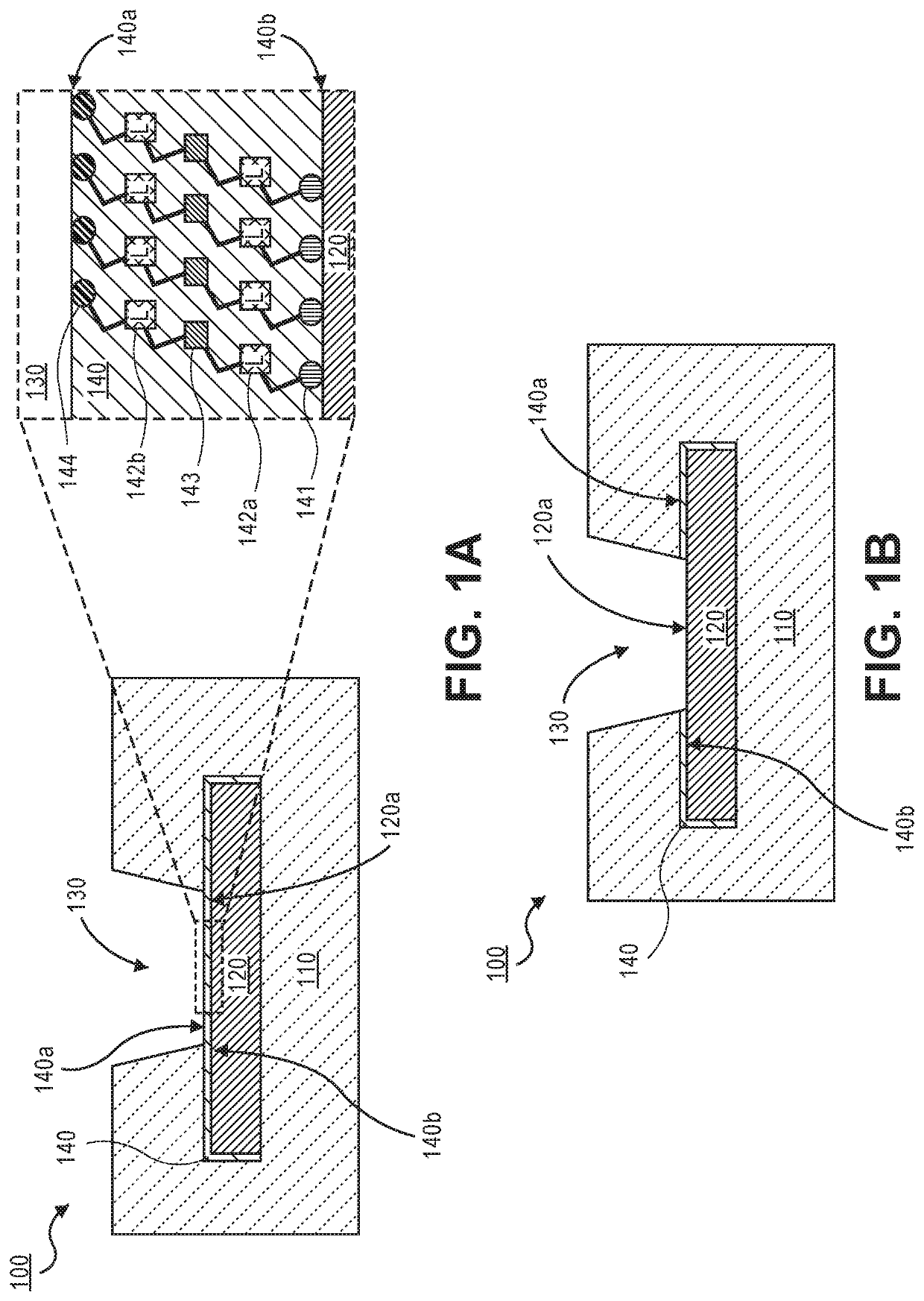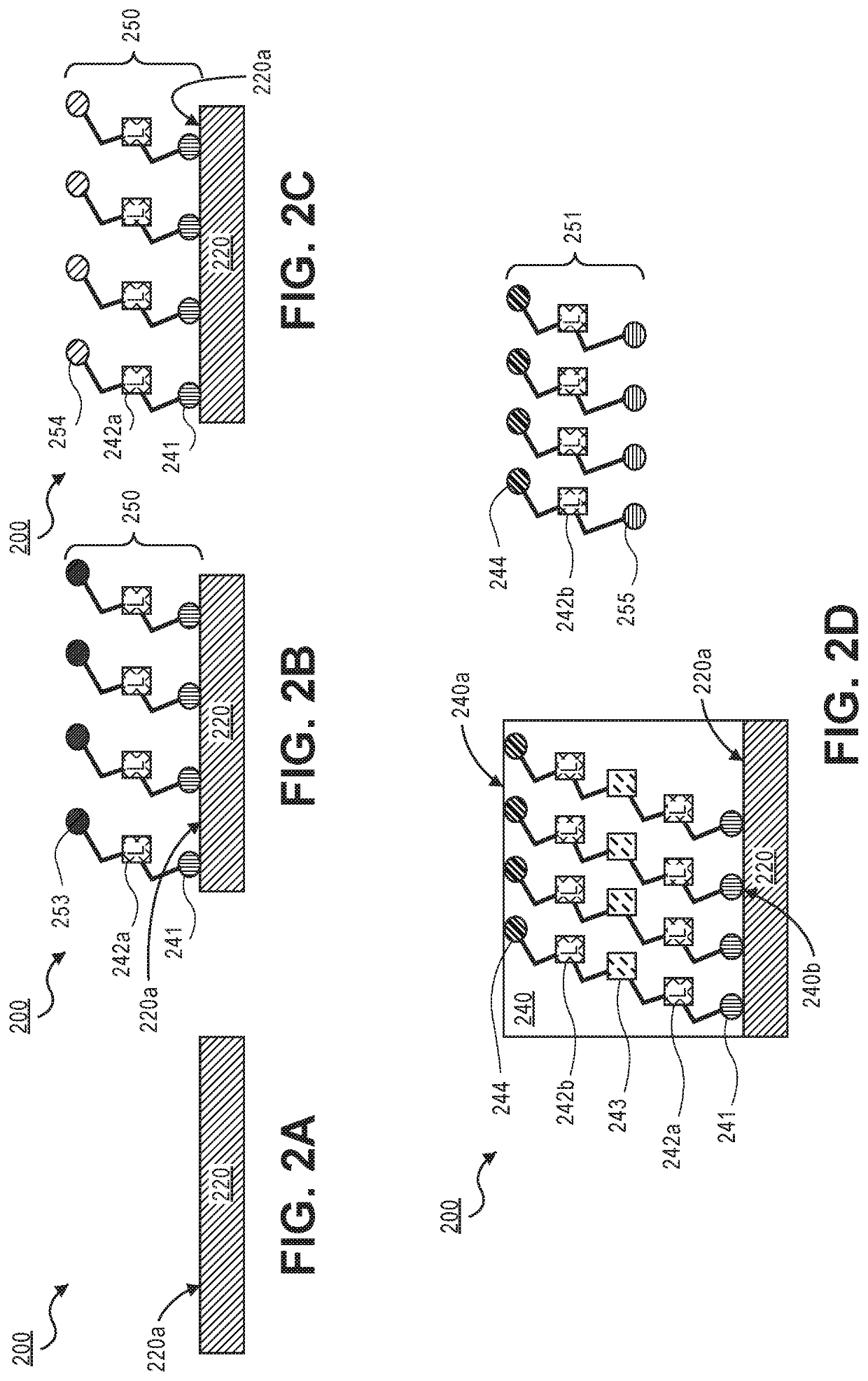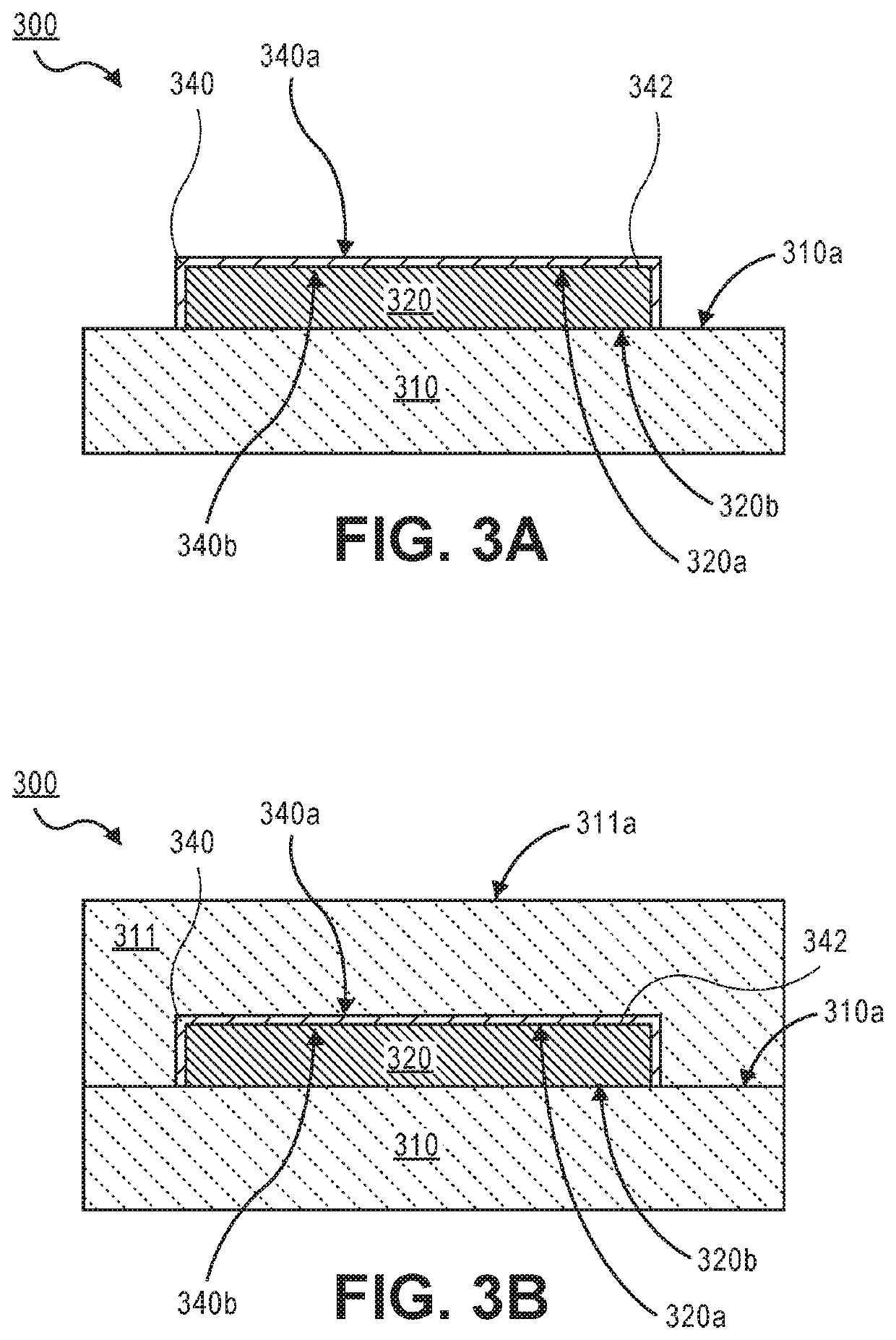Package architecture with improved via drill process and method for forming such package
a technology of packaging and vias, applied in semiconductor devices, semiconductor/solid-state device details, electrical devices, etc., can solve problems such as easy ablation, void vias and/or underfilled vias, and plating defects
- Summary
- Abstract
- Description
- Claims
- Application Information
AI Technical Summary
Benefits of technology
Problems solved by technology
Method used
Image
Examples
example 17
[0124 is an organic layer comprising of a first monolayer having a first end group and at least one of a second end group and a third end group; a second monolayer having a fourth end group and a fifth end group. The first monolayer and the second monolayer include at least one of a first plurality of light-reflective moieties and a second plurality of light-reflective moieties; and an intermediate group bonding the fourth end group of the second monolayer and at least one of the second end group and the third end group of the first monolayer to form a SAM layer. The intermediate group includes at least one of a first reactive bond of the second end group and the fourth end group and a second reactive bond of the third end group and the fourth end group.
[0125]In example 18, the subject matter of example 17 can optionally include the SAM layer which includes a molecular structure having the first end group, the intermediate group, the fifth end group, and at least one of the first pl...
PUM
 Login to View More
Login to View More Abstract
Description
Claims
Application Information
 Login to View More
Login to View More - R&D
- Intellectual Property
- Life Sciences
- Materials
- Tech Scout
- Unparalleled Data Quality
- Higher Quality Content
- 60% Fewer Hallucinations
Browse by: Latest US Patents, China's latest patents, Technical Efficacy Thesaurus, Application Domain, Technology Topic, Popular Technical Reports.
© 2025 PatSnap. All rights reserved.Legal|Privacy policy|Modern Slavery Act Transparency Statement|Sitemap|About US| Contact US: help@patsnap.com



